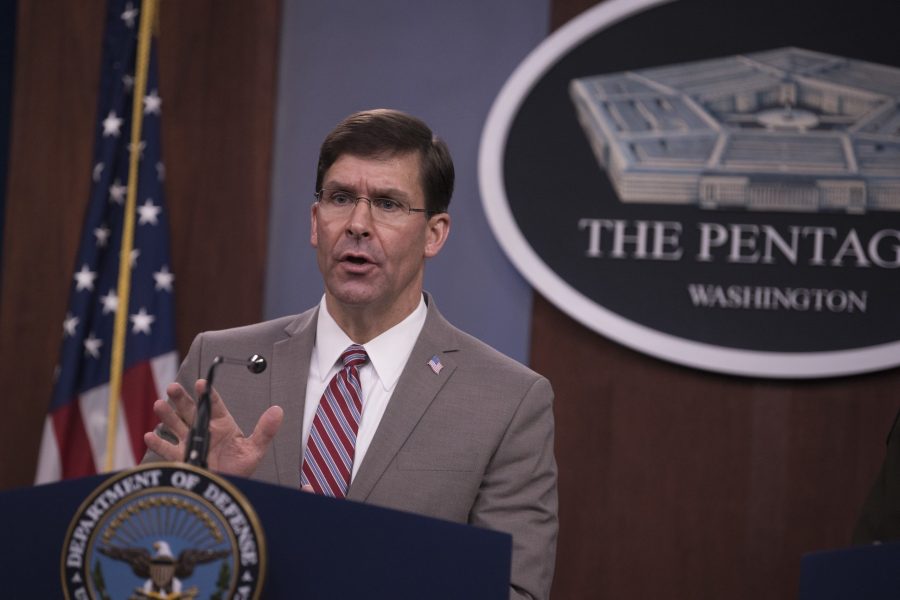The United States launched retaliatory strikes against five weapons storage facilities across Iraq belonging to the Iranian-backed group Kataib Hezbollah, following the March 11 attack on Camp Taji that killed two Americans and one soldier from the United Kingdom.
The Defense Department will not name the two Americans, or what service they were associated with, until their next of kin are notified. Initial reports said at least a dozen others were wounded, but that number has since risen to 14, including some Iraqi Security Forces.
“These strikes were defensive, proportional, and in direct response to the threat posed by Iranian-backed Shia militia groups who continue to attack bases hosting” coalition forces supporting Operation Inherent Resolve, according to a March 12 Pentagon statement that noted the facilities housed weapons used to target U.S. and coalition troops.
“The United States will not tolerate attacks against our people, our interests, or our allies,” Defense Secretary Mark Esper said. “As we have demonstrated in recent months, we will take any action necessary to protect our forces in Iraq and the region.”
U.S. Central Command boss Gen. Kenneth McKenzie told the Senate Armed Services Committee on March 12 that Iranian proxy groups have been conducting attacks such as the one on Camp Taji in response to America’s maximum-pressure campaign on Iran. Tehran cannot respond diplomatically or economically to U.S. sanctions and other measures, and so is resorting to acts of force. While Iran has conducted state-level attacks, such as the Jan. 7 ballistic missile strike on al-Asad Air Base in Iraq, much of its military action is taken by militias that receive weapons, funding, and direction from Iran.
Kataib Hezbollah was also responsible for the December rocket attack on a U.S. location in Iraq, which killed an American contractor, prompting another series of retaliatory U.S. strikes on the militia, and ultimately led to the January drone strike in Baghdad that killed Iranian military leader Qasem Soleimani.
While some forces deployed to the region in response to these tensions have returned home, there is still a surge of troops in the Middle East, including two aircraft carriers and additional combat aircraft, for an approximate increase of 10,000 troops, McKenzie said.
That is still a “small fraction” of the total American military, and will not take away from the broader Defense Department’s emphasis on the National Defense Strategy and preparing for great power competition, he said.
In discussions with senior Iraqi officials, the Defense Department reiterated its commitment to protecting U.S. and coalition troops.
“These terror groups must cease their attacks on U.S. and coalition forces or face consequences at a time and place of our choosing,” according to the statement. “The U.S. and the coalition remain committed to the lasting defeat of ISIS, and the long-term security, stability, and sovereignty of Iraq.”





